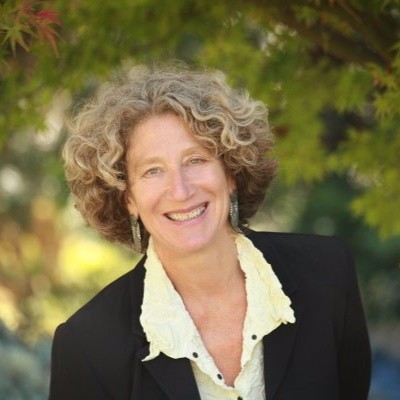On the supply side we need to look at the notion of generate local, consume local. We can begin building micro-grids, or smaller fractal, self-similar grids that are composed into a larger grid infrastructure in economic industrial centers.
 Providing Clean Energy to 7.7 Billion People in <30 Years
Providing Clean Energy to 7.7 Billion People in <30 Years

Shuli Goodman | LF Energy
Tell us a bit about LF Energy and your role in the alternative energy industry?
LF Energy, is a vendor-neutral, non-profit initiative from The Linux Foundation whose mission is to accelerate the energy and electricity sector’s world-wide decarbonization goals through an open source-based ecosystem. LF Energy is a first-of-its-kind initiative, that takes the problem of solving climate change and provides a 21st-century technological plan of action through open frameworks, reference architectures and support ecosystem that bring complementary projects to one collaborative home. In addition to RTE the French transmission system operator, members include organizations like Energinet, TenneT, Alliander, Elering, IBM, Recurve, Stanford University, OSISoft, Unicorn, Root9B and more. Find more information here: https://www.lfenergy.org/.
I am the founder and Executive Director of LF Energy. I joke that our role is to break things – we provide the creative destruction that enables innovation and hyper-scaling by disrupting the black boxes and vendor lock-in that plagues the energy sector.
What are the biggest challenges that today's energy companies are facing?
It depends on what part of the world you are in. Universally there is a lack of perspective about the scale and scope of the problem. To use a sports analogy, we are fighting over the puck and not looking at where the puck is going. Estimates by IRENA suggest that electrification demand will explode by 2.5 times by 2050. Therefore, it is not enough for Denmark, or California to achieve decarbonization goals. Of course, it is good and important, but in many ways, these are proofs of concepts. The problem is economics; the rest of the world is unable to afford those solutions at the necessary scale of the decarbonization problem. We must shift the entire grid infrastructure economics with commodity layers of software that provide software defined virtualization of hardware coupled with the ability to utilize commodity hardware that is interoperable. We have found at the Linux Foundation that open source and shared leveraged development drives whole industries towards economic efficiencies while accelerating exponential innovation and hyper-scaling.
How can the energy industry provide clean energy fast enough to meet the global goal of going carbon-neutral by 2050?
There are two parts to this question – supply and demand. On the supply side we need to look at the notion of generate local, consume local. To the degree that we shift transport and distribution demands, we can begin building micro-grids, or smaller fractal, self-similar grids that are composed into a larger grid infrastructure in economic industrial centers. In more remote areas, the smaller grids can operate autonomously. We must shift the entire grid infrastructure economics with commodity layers of software that provide software defined virtualization of hardware coupled with the ability to utilize commodity hardware that is interoperable.
On the demand side, the more efficient we can become, the greater our ability to operate net zero grids. The less we “spend” in terms of electricity, the more we “save”.
As the U.S. electricity consumption grows, what infrastructure do we need to put in place to meet the increasing power demands?
Local resiliency and market models that drive innovation. I see this as institutional rather than your typical 50-year utility infrastructure investments of the past.
How can energy companies utilize open source technologies to share ideas, reduce costs and pool resources to develop green tech quickly?
Join us. We are curating an entire stack that addresses functional requirements and capabilities at the transmission, distribution, generation, and demand side. At Linux Foundation Energy we provide neutral governance coupled with infrastructure, events, and a training and capacity building platform to ensure that utilities develop the skills to engage in collaborative innovation.
Are energy companies fearful of open source? Why shouldn't they be?
Black Duck and Synopsis studies found that open source is in inside of 100% of energy sector software. The problem is not open source, it’s the black-boxes and solutions that create problems of interoperability between vendors, rather than resolve the interoperability problems.
In general, open source has been found to be safer. It is without a doubt cheaper.
What has come out of this open-source collaboration?
We have a group of DSO and TSO architects developing a common high-level architecture. That alone can facilitate scaling and insure compatibility and coordination across high, medium, and low voltage, all the way to the customer. This is extraordinary. It is not an academic exercise, but a “how are we going to make this work” exercise by practical people responsible for grid operations.
How do you see the next decade unfolding for the alternative energy industry and the energy outlook in general?
Generate local, consume local. We need to drive functions out to the edge. It’s an exciting time.
 About Shuli Goodman
About Shuli Goodman
Shuli Goodman is the founder and Executive Director of LF Energy, a new Linux Foundation project that supports open source innovation in the energy and electricity sectors. She has nearly three decades experience in the startup and ongoing support of governance and multi-stakeholder engagement bodies that have been convened to enable decision-making and provide steering capacity for high-visibility and/or high-risk initiatives. Her goal is to inspire, train, and enable 10,000 developers, in the next 10 years, to digitally transform the world’s power systems.
The content & opinions in this article are the author’s and do not necessarily represent the views of AltEnergyMag
Comments (0)
This post does not have any comments. Be the first to leave a comment below.
Featured Product

